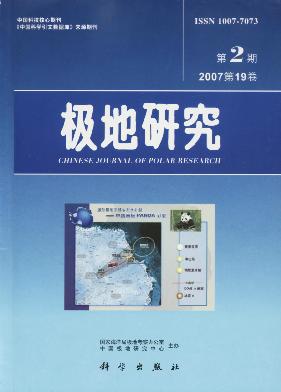Seasonal variation of the sea ice concentration as well as its dynamical and thermodynamical forcing mechanism in the East Siberian Sea are studied in detail using the satellite remote sensing data during 1999—2005 provided by National Snow and Ice Data Center of USA.The analysis for 1999 sea ice condition reveals that the annual variation of sea ice cover can be divided into 5 stages,namely,packed ice,broken belt along the continental slope,western melting,all-sea ice melting and autumn freezing.The annual five stages are distinguishable clearly,although the minimum of the sea ice cover and appearing date are different each year.The freezing period lasted only 1.5 months,whereas the melting process spent about three months.A sea-ice-rupture area happened in May along the continental slope of the East Siberian Sea due to wind field's divergence.However,the wind field went against the sea ice melting and freezing at the rest of 1999.The runoffs,especially from Indigirka River,Kolyma River,Yana River and Lena River,are the key factors for sea ice melting in the East Siberian Sea.The minimum of the sea ice cover appeared in the late September,in which there wasn't sea ice any more along the coast and a large area of open water formed.In the Northern Hemisphere,the solar heating and air temperature rising provided heat energy continuously for the sea ice melting.

